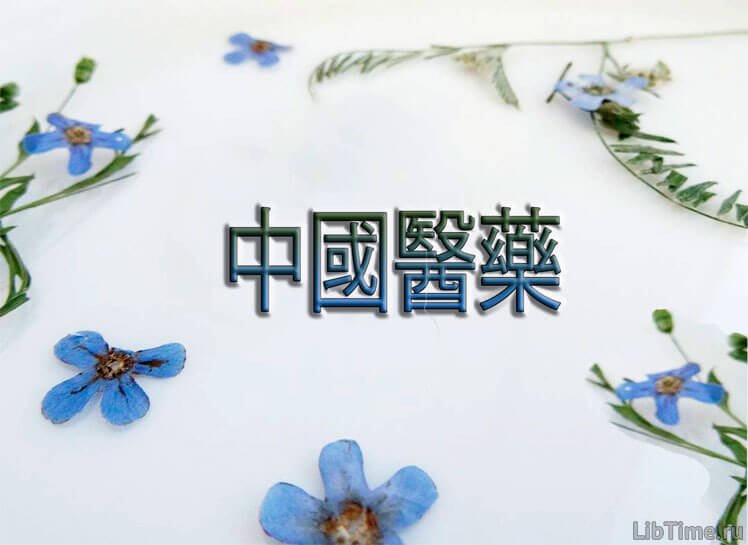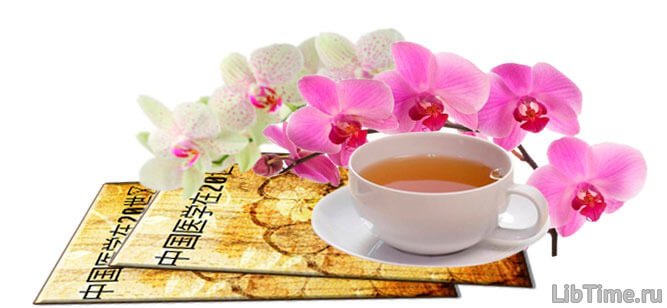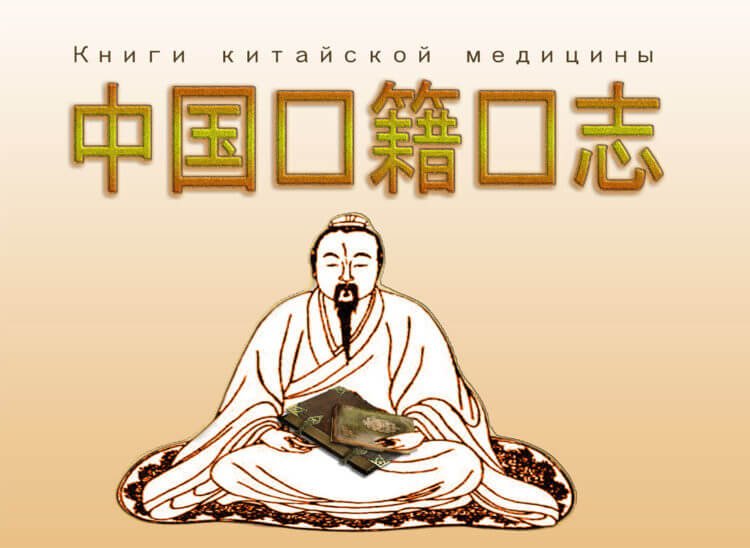Chinese medicines
Chinese medicines since ancient times are made on the basis of natural components of medicinal plants, minerals, extracts of animal origin.
Richness of flora and fauna of China
The richness of flora and fauna of China is explained by the huge territory of the country, which occupies a significant part of East and Central Asia, is characterized by an exceptional diversity of climatic and soil conditions. Suffice it to say that only in its eastern part there are 20 thousand different species of plants.
The number of tree and shrub species is particularly high - about 2.5 times more than in the whole of North America. China is not only the homeland of various species of wild and cultivated woody and herbaceous plants, and especially medicinal plants, but also served as a place of acclimatization of numerous representatives of flora of Europe, Siberia, Burma, Vietnam, Indonesia and other countries.
Chinese pharmacology knows more than a thousand medicinal plants, but this is clearly not exhaustive. Some authors claim that almost all representatives of the Chinese flora are used for medicinal purposes without exception.
The animal world is rich and diverse, especially in the north and south of the country - from Siberian taiga fauna to tropical species. This fact, as well as the wealth of mineral resources, was also used in national medicine.
Raw materials for Chinese medicines
Chinese physicians, in the presence of such a rich arsenal of medicinal raw materials, naturally had to classify them in ancient times. Based on the theories that existed at that time, Li Shi-zhen, for example, divided the 10,000 prescriptions in the "Bian tsue-gan-mu" into 7 classes, including 1,892 types of medicines:
- those whose composition is dominated by "fire and water";
- those predominantly composed of "earth";
- dominated by "metals and stones";
- those composed of plants, grains, roots;
- those in the preparation of which various organs of insects, birds, and animals were used;
- medicines made from the recycling of household items (rags, utensils);
- various substances of the organic world.
Chinese medicines by their effect on the human body
Folk medicine gives its own explanation of the effect of medicines on the human body. Not having, of course, scientific criteria for determining indications and contraindications to the use of this or that remedy and interpreting the mechanism of its action, Chinese ancient physicians underpinned their observations and conclusions with philosophical views of their time, such as, for example, the doctrine of the five primary elements.
That is why they attached such importance to color, taste and other, purely external, properties of medicines. According to these properties, a conclusion was often made about the correspondence of this or that remedy to the primary element and a certain organ. Thus, according to the views of the time:
- Green and acidic medicines corresponded to the element "wood", on this basis it was concluded that they had a favorable effect on the liver.
- Red and bitter corresponded to "fire" and were intended for the treatment of heart disease.
- Yellow and sweet corresponded to "earth" and were used for stomach diseases.
- Dark and salty medicines were used for kidney diseases, as they corresponded to "water".
- The primary element "wind" also had its color and taste, and, therefore, its place of application (organ).
Chinese medicines for the human body
In traditional classification of medicines of Chinese medicine, besides the above-mentioned circumstances, the same traditional division of a human body into 3 parts-belts was taken into account:
- All that crowns the plant and is in its upper part was used respectively for diseases of the chest, neck, head - those areas where, as it was believed, the masculine "yang" prevailed.
- The stems and generally the middle part of the plant were used to treat stomach ailments.
- Roots were intended to cure diseases of the lower part of the body with a predominantly female "yin".
- Branches of plants (trees and shrubs) were used for diseases of the limbs,
- bark - for diseases of muscles and skin,
- the heartwood - for diseases of the internal organs.
The kinship with the male principle "yang", and therefore indications for use in diseases of the upper part of the body had medicines, cold or hot, warming or cooling, generally potent. And vice versa, sour, bitter, as well as weakly acting, corresponded to the female beginning "yin" and were used for treatment of lower parts of a body.
Division of medicines according to modern medicine
Besides this complicated, even burdened with all sorts of speculative theories and principles of classification of Chinese pharmacology, the latter practically, experimentally has long ago divided its remedies by action into main groups - a division accepted in modern medical science.
We can say that there were narcotic, sleeping pills, analgesic, diuretic, choleretic, tonic, antidysenteric, anthelmintic, tonic, hemostatic and other means:
- The tonic include tea, tobacco, tortoise shell, tiger bones, cassia, cinnamon, asbestos, and zhen shen.
- Of the astringent remedies, Chinese authors mention ink nuts, lotus seeds, nutmeg, opium, date seeds, sour plums, iron powder, and quince.
- To the permissive they include mimosa, musk, ginger, dried and ground scorpion's body, camphor, (in ancient times it was already imported from the island of Borneo);
- Similar, but less strong action have, in their opinion, chamomile, pomerantz peel, dried silkworm.
- Soapstone, sage, ambergris, red beans, rhubarb, sulphurous soda, and snow water are considered laxatives.
- White hellebore, turnip seeds and root, copper sulfoxide are considered vomiting agents.

Chinese medicines of animal origin
In the next place after vegetable in the Chinese pharmacopoeia are the means of animal origin, and most of them are completely unknown to our science.
Although, at first glance, the traditional Chinese remedies of animal origin seem strange, they have been selected by collective experience and tested over the centuries as carefully as plant remedies. Here is just a very short list of animals, fish, birds and reptiles whose organs and body parts are used to make medicines:
- shark (fins),
- antelope (meat, horns),
- sheep (meat, testicles),
- beaver (meat),
- buffalo (meat, horns),
- bull (bile, gallstones, teeth),
- wolf (meat, tongue, fur, ashes),
- viper,
- frog (dried body),
- bear (bile),
- bat (feces),
- spider (dried body),
- cuttlefish (skeleton),
- cow (horns),
- chicken (umbilical membranes, egg shells),
- rooster (comb),
- monkey (gallstones), etc.

Again, as with flora, it may be said that no representative of the animal world, ornithofauna, ichthyofauna, and everything that flies above the earth, lives on it and under it, and inhabits the rivers, lakes, and seas that wash the country, has been left out of the field of vision of Chinese medicine men.
Chinese pharmacology, as has been indicated, subdivides remedies of this kind into certain groups, according to their main action. To name a few of them:
- Scolopendra, scorpions, locusts, bile and gallstones of bull, bear, monkey, and tiger bones are used as anticonvulsants;
- as a general tonic recommended meat otter, tortoise shell;
- styptic - oyster shell, hedgehog skin, donkey skin glue;
- antipyretic - the body of frogs, cicadas, earthworm;
- antidysenteric agents are the excrement of bats and the skin of snakes.
But in addition to the above action, each of these Chinese medicines has a whole complex of other properties:
- The oyster, for example, is also used as a styptic, anti-asthmatic, muscle tone-reducing remedy.
- Bat excrement," along with the treatment of hemeralopia, is also used for amaurosis, intermittent fever, and increased sweating.
- One of the most popular healing remedies in China is deer antlers (antlers).
Antler medicine
Especially valued are young antlers, which have not yet had time to ossify and consist of cartilage filled with bloody mass. Such they are in late May - early June. And this is the best hunting period. After killing a deer, the hunter cuts off its head, tilts it down with its antlers so that all the blood passes into them.
In this position, the head is kept for 12 hours. Then the antlers, cut off together with the frontal bone, very carefully dried on a slow fire. Medicine from antlers is prepared in two ways.
- The first consists of boiling broth from the liquid contained inside the horns. Broth is the thicker, the younger not ossified still horns.
- The second way to prepare the drug is as follows: the horn is scraped, grinded into a fine powder, which is insisted on water or rice vodka.
Like zhen-shen, antlers are usually intended to be taken only in combination with other components, as part of multicompound medicines, which are generally characteristic of Chinese pharmacology. But about this below. Now we note only that empirically established centuries ago, the healing effect of antlers has recently been confirmed experimentally.
It is established that the tissues and vessels neokostenevshih neokostenevshih horns of spotted deer (less - elk) contain valuable tonic agents. Widely known and often used nowadays pantocrine is, in a way, the great-grandson of Chinese folk remedies.
Chinese medicine remedies of mineral origin
As already mentioned, Chinese pharmacology also makes extensive use of remedies of mineral origin, using many metals and their compounds for therapeutic purposes. With regard to the use of some of these medicines, Chinese national medicine has an undoubted priority. This applies, for example, to mercury.
As early as the beginning of our era, mercury was successfully used for skin diseases. And even a few years earlier it was learned to treat syphilis. Sulphur has long been used for scabies, and arsenic for intermittent fever. Minerals and remedies of ore origin, which have long been known to the Chinese pharmacopoeia, include as follows:
- silver,
- copper,
- iron,
- gold,
- arsenic,
- sulfur,
- magnetic stone,
- coral,
- malachite,
- lapis lazuli,
- sea sand,
- various types of clay,
- gypsum,
- rock resin,
- pearls,
- lime, etc.,
as well as chemical compounds such as:
- carbonic acid and sulphuric acid sodium,
- sulfuric acid iron,
- acetic acid and sulphuric copper,
- carbonic acid lime,
- borax,
- alum,
- chromic acid lead.

It can be concluded that Chinese pharmacology is based on the use of mainly natural, not artificially created medicines. And this is its first distinctive feature, which can be easily explained by the empirical nature of the very method of selection of healing substances.
Such a statement does not mean that she is not aware of certain ways of their processing. Thus, crushing (including to the smallest dust-like powders), boiling, drying and soaking of certain substances are widely used.
For example, the method of using turtle shell is curious. As it is known, it is extremely strong and almost impossible to be mechanically processed, so for the preparation of medicines it is soaked in vinegar.
Chinese medicines and their forms
In accordance with the above methods of processing medicinal substances are also the most common medicinal forms. These are powders and decoctions. An example of the first form can be powders used in dysentery. They include crushed pearls, gallstones, charred prunes, camphor, borax, acetic acid copper and some other components.
These powders are used to blow into the nose with a special tube. An example of the second form is a decoction of rhubarb, saltpeter, celandine root and licorice, which is recommended as a mouthwash for stomatitis.
The multiple complexities of Chinese medicines
Chinese medicines have a second distinctive feature of Chinese pharmacology. We mean the complexity of its prescriptions, which often combine several ingredients of plant, animal and mineral origin. 10-15 constituent parts - a commonplace phenomenon in the formulation of folk medicine.
After all, the famous "tiger vodka" - a tincture used as a tonic, anti-inflammatory, anticonvulsant and antirheumatic agent, in addition to its main component - decoction of tiger bones - includes 130 others! What explains such complexity of prescriptions of Chinese medicines and what Chinese doctors are guided by, introducing so many ingredients into their composition?
The answer to this question should be sought in the fact that the national pharmacology in the selection of drugs adheres to the principle of synergy of their action, and the principle of interaction on the entire existing at the moment set of manifestations of the disease. The latter is in direct connection with the aspiration of Chinese physicians to strictly individualized treatment.


